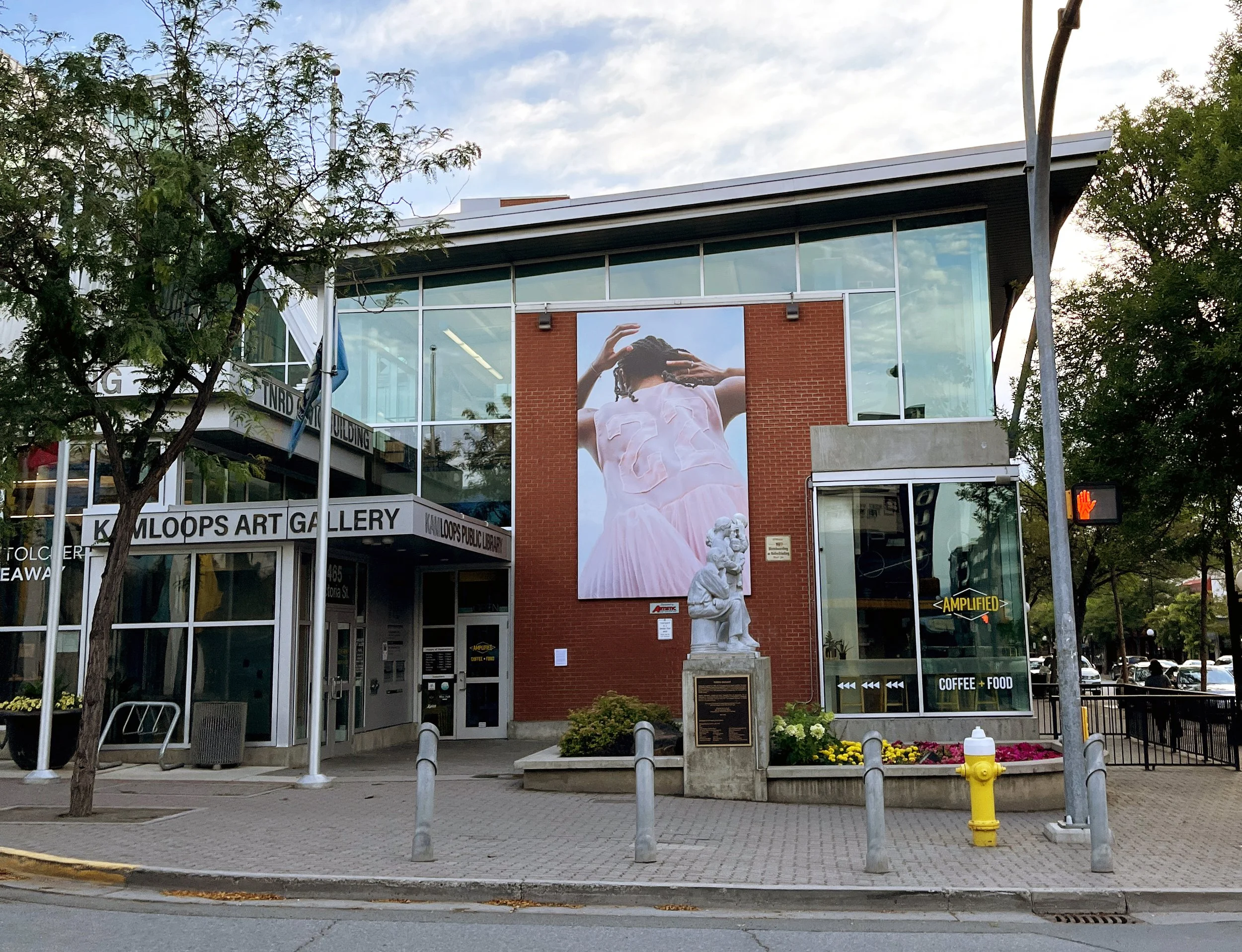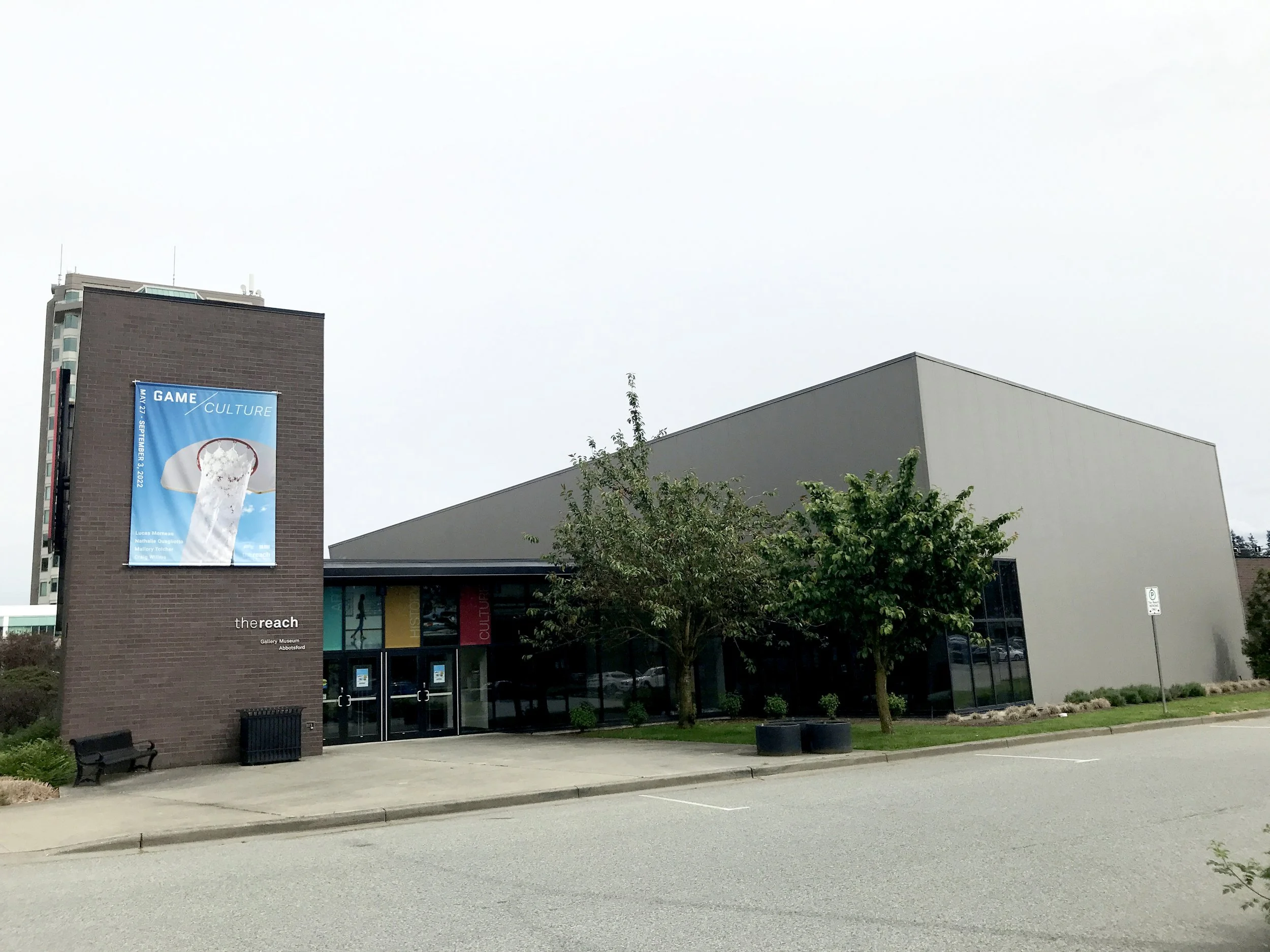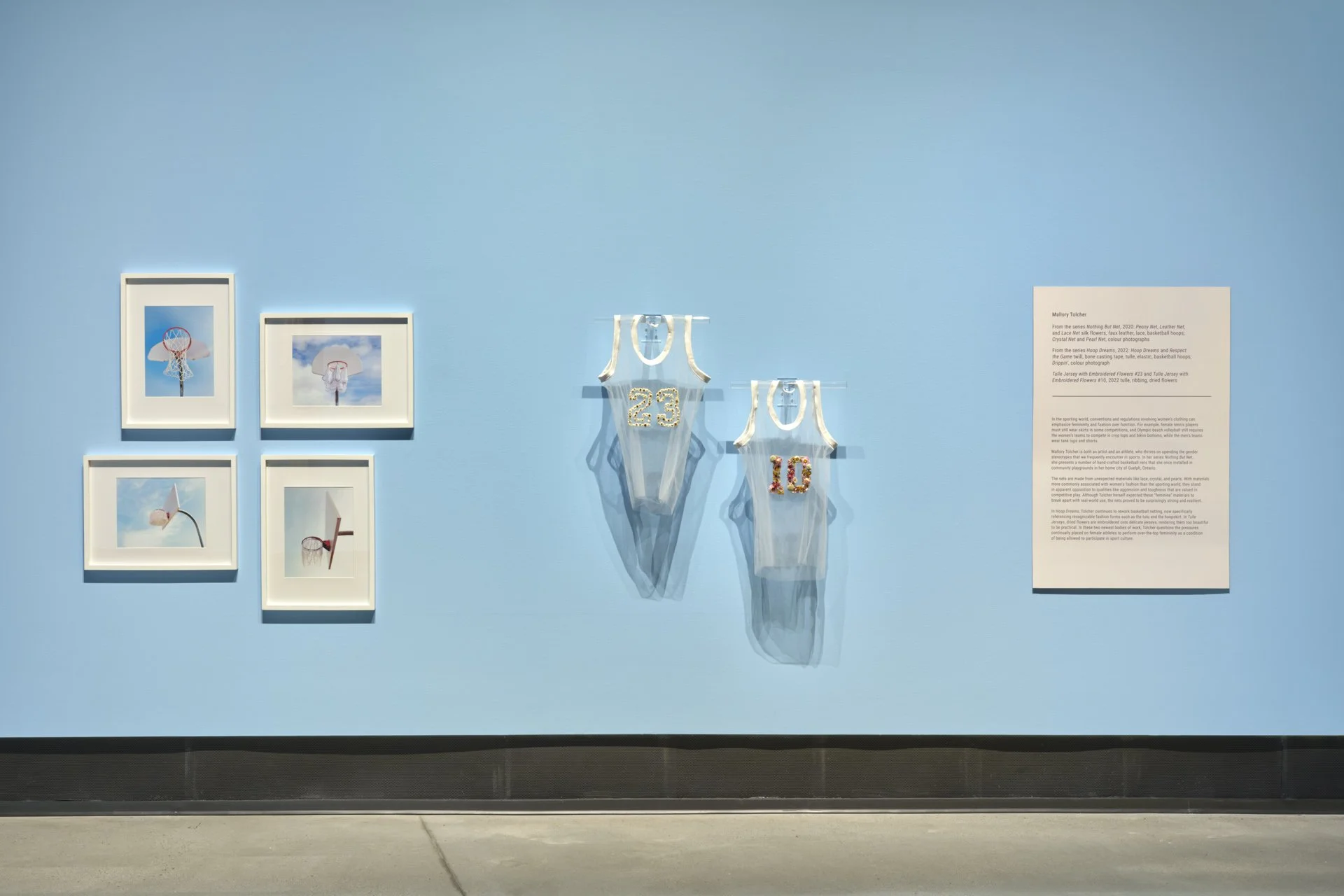POST UP
Mississippi Valley Textile Museum
Mississippi Mills, Ontario, Canada
August 12th, - October 7th, 2023
Through a series of textiles installed on metal rims and wooden backboards, Post Up reimagines the conventional basketball net through the intricate and domestic medium of crocheted lace.
Lacework and crochet have been integral to women’s creative expression, serving as profound forms of artistic craftsmanship that often went unrecognized within patriarchal systems. Like basketball, lace allows for creativity, improvisation, and skill within a structured arena. Drawing inspiration from historical lacework techniques and motifs, Mallory Tolcher designed each mesh to be meticulously handcrafted with white thread, to create intricate designs that play off the form and colour of a standard basketball mesh. By integrating these traditionally feminine practices into the hyper-masculine sport of basketball, she aims to confront ingrained perceptions of athletics, subvert the confined definition of softness in such contexts, and emphasize the power and strength that lies within femininity.
The Mississippi Valley Textile Museum chose specific historical lace from their archives to have on display alongside the contemporary pieces. These artifacts complimented Tolcher’s work and practice and gave viewers a larger sense of design through labour.
Post Up’s opening night followed a public ceremony of the induction of James Naismith into the Canada’s Walk of Fame. Surrounded by friends and family of the inventor of basketball, as well as the community of where he grew up, Tolcher spoke on how the game has inspired her work and changed her life.
Tolcher also had colourful, custom basketball nets on display during the Annual Naismith 3x3 Basketball Tournament.

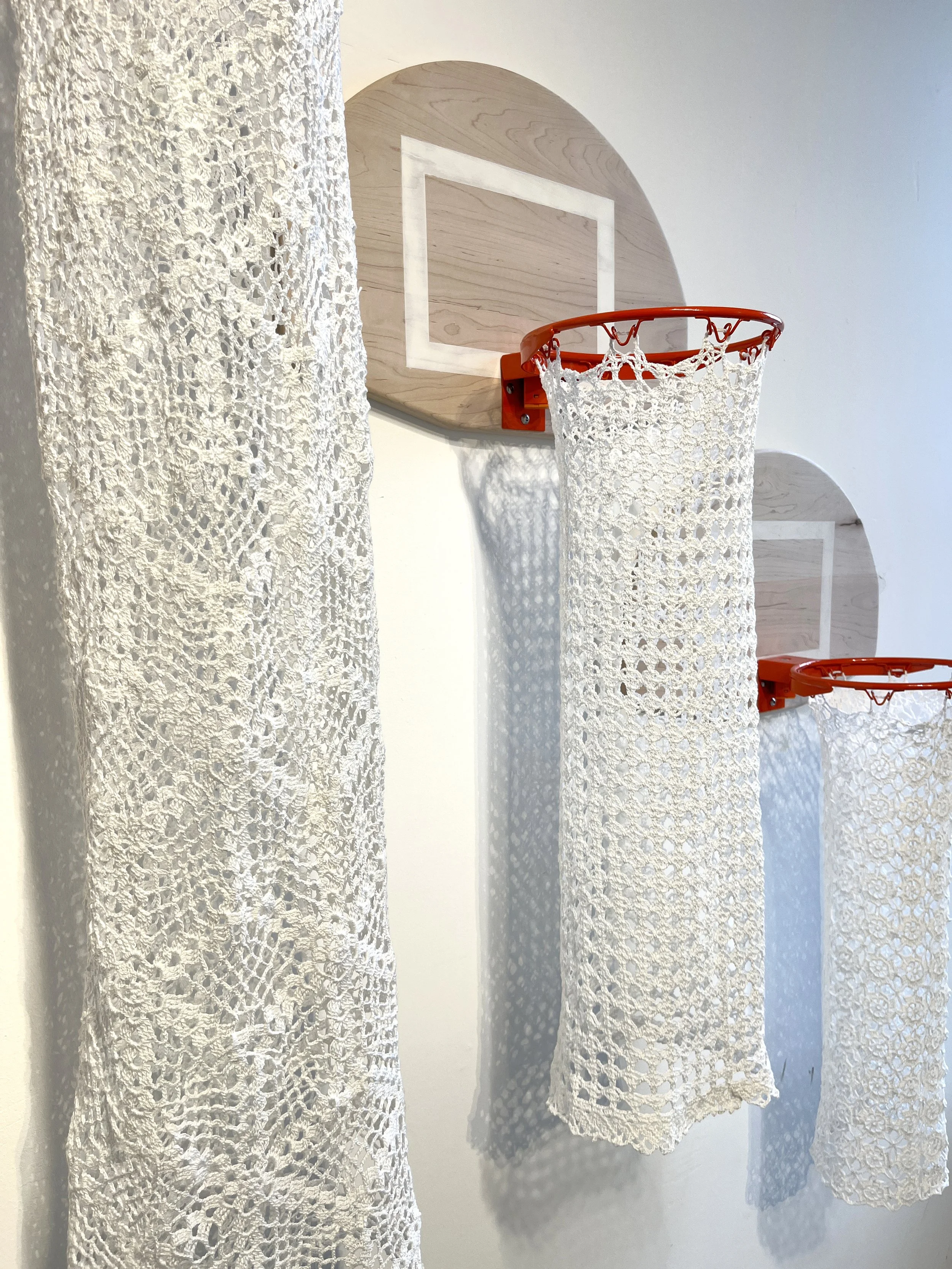

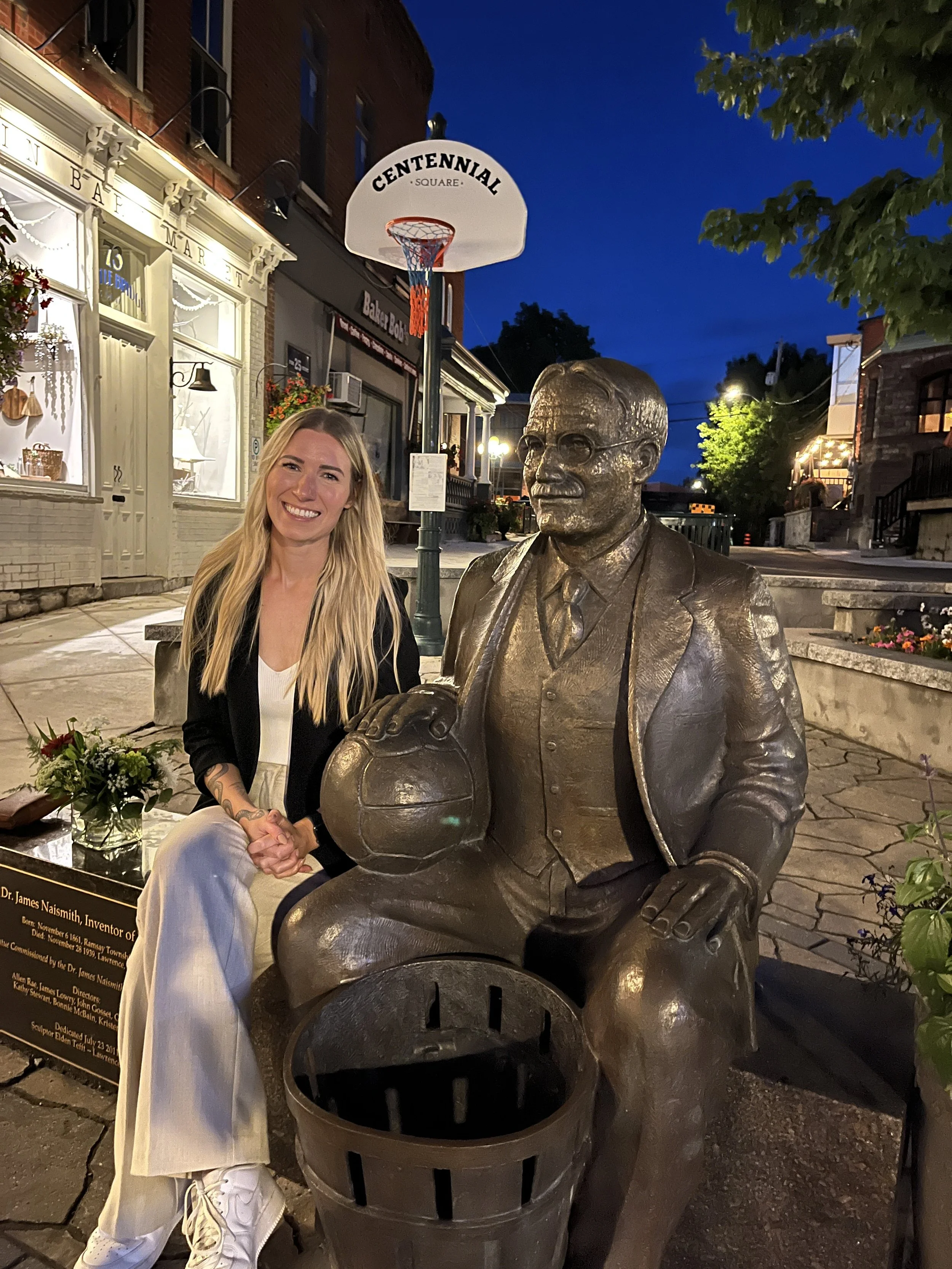
THE FADEAWAY
Kamloops Art Gallery
Kamloops, British Columbia, Canada
July 8th, - September 9th, 2023
“Through a series of re-imagined basketball jerseys, Tolcher engages with the idea of the fadeaway as a metaphor for the loss of knowledge about the history of women’s sport. As women started playing basketball in the early twentieth century, women’s roles in society were limited and prescriptive. Bloomers made of long and delicate materials were deemed acceptable attire for women’s sports jerseys in the early 1900s. In her re-examination of women in sport, Tolcher uses tulle, organza, ribbon, and satin to create a series of women’s basketball jerseys to reference the construction of basketball jerseys from this time. Some of her jerseys are fashioned as floor-length gowns and elaborate blouses to draw attention to the impractical fabric and designs of women’s jerseys in the past and as a reminder of how far women’s basketball has come in the acceptance of women in professional sport. She also plays with the conventions of fashion photography through a series of photographs that show her jerseys worn by female models that emphasize how youth, beauty, and ability are idealized in fashion media.
By integrating the numbers and name bars of the modern jersey with couture fashion and incorporating slogans from gender rights activism into her designs, Tolcher’s work highlights how far women’s basketball has come as a result of social justice movements. One jersey adorned with pink roses remembers Rose La Rose, an Indigenous child who attended a Residential School in Fort Shaw, Montana, in the early 1900s. La Rose’s all-Indigenous team had an undefeated record and a reputation for an “aggressive” style not seen in the women’s game before. Their play would earn the team an invitation to the third Olympic Games for an exhibition game in which they outclassed their competition. On another adaptation of the basketball jersey, Tolcher has printed “Support Women’s Sports” on a sheer fabric dress to reference the slogan famously worn by American basketball player Margaret Wade in the 1970s. As the women’s game has gained acceptance Women's National Basketball Association (WNBA) legends have been outspoken about calls for social justice, leading the way for professional women’s sport leagues. Tolcher’s Social Justice Warm Up Jersey is a nod to the WNBA stars who wore the slogan “Change Starts with Us” on their jerseys in support of the Black Lives Matter movement.
Through The Fadeaway, Tolcher’s strategic choice of materials and re-positioning of key social justice messages offers a re-examination of women’s basketball and emphasizes how women have stepped up and often been first to speak up in the face of injustice and inequality. Her project celebrates overlooked histories and the women who were instrumental in bringing women’s basketball to today’s high level of professionalism and respect.”
- Craig Willms, Kamloops Art Gallery Assistant Curator
Exhibition photos by Teresa Donck-Matlock

GAME / CULTURE
The Reach Gallery Museum
Abbotsford, British Columbia, Canada
May 27th, - September 3rd, 2022
Presenting Sponsor and leading Art, Sport and Entertainment Agency, Victory Creative Group as well as preeminent cultural basketball magazine, SLAM®
“In the sporting world, conventions and regulations involving clothing can emphasize femininity and fashion over function. For example, female tennis players must still wear skirts in some competitions, and Olympic beach volleyball still requires the women’s teams to compete in crop tops and bikini bottoms, while the men’s teams wear tank tops and shorts.
Mallory Tolcher is both an artist and an athlete, who thrives on upending the gender stereotypes that we frequently encounter in sports. In her series Nothing But Net, she presents a number of hand-crafted basketball nets that she once installed in community playgrounds in her home city of Guelph, Ontario.
The nets are made from unexpected materials like lace, crystal, and pearls. With materials more commonly associated with women’s fashion than the sporting world, they stand in apparent opposition to qualities like aggression and toughness that are valued in competitive play. Although Tolcher herself expected these ‘feminine’ materials to break apart with real-world use, the nets proved to be surprisingly strong and resilient.
In Hoop Dreams, Tolcher continues to rework basketball netting, now specifically referencing recognizable fashion forms such as the tutu and the hoopskirt. In Tulle Jerseys, dried flowers are embroidered onto delicate jerseys, rendering them too beautiful to be practical. In these two newest bodies of work, Tolcher questions the pressures continually placed on female athletes to perform over-the-top femininity as a condition of being allowed to participate in sport culture.”
- Adrienne Fast, The Reach Gallery Museum Curator
Exhibition photos by Rachel Topham Photography



